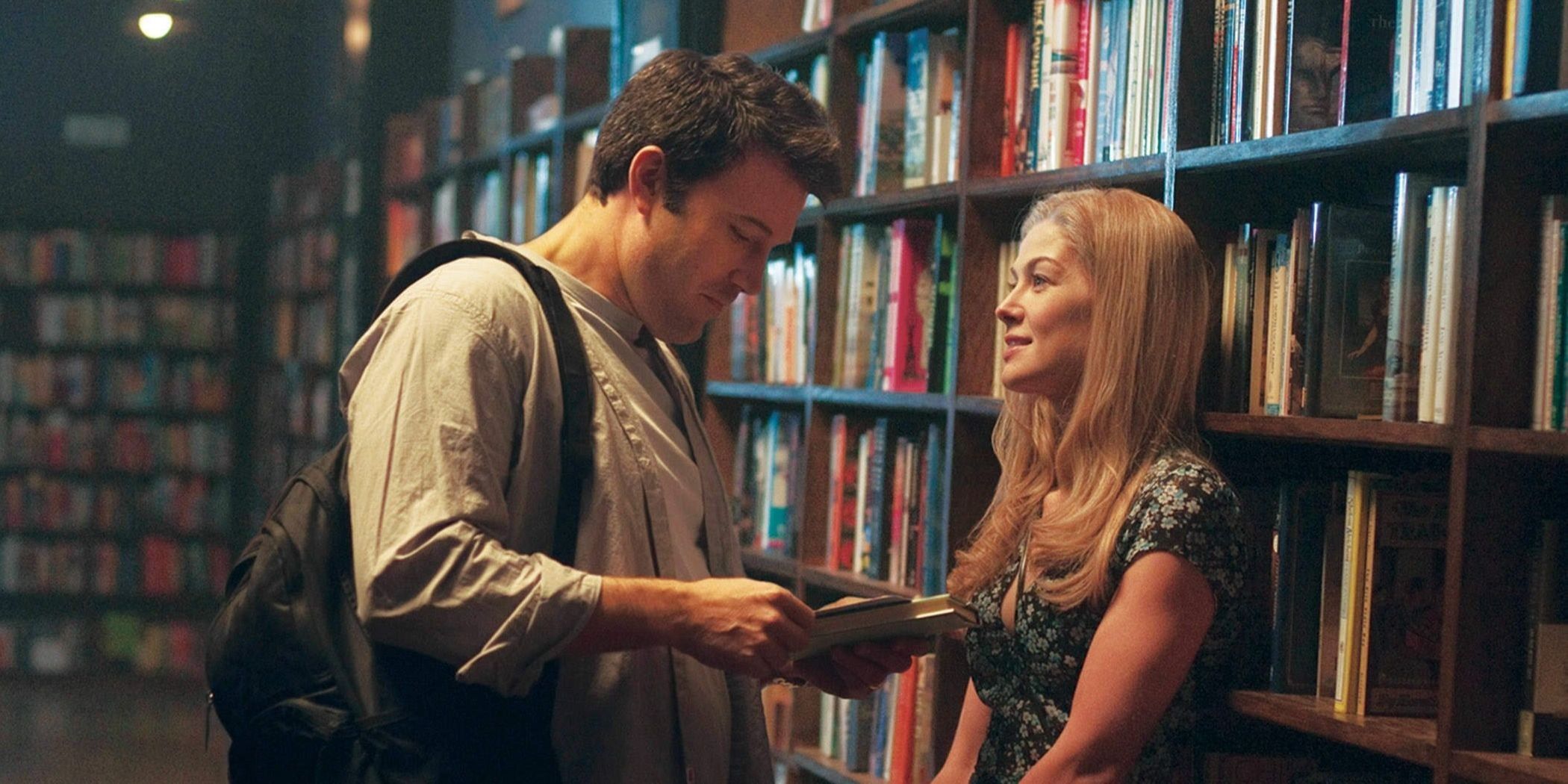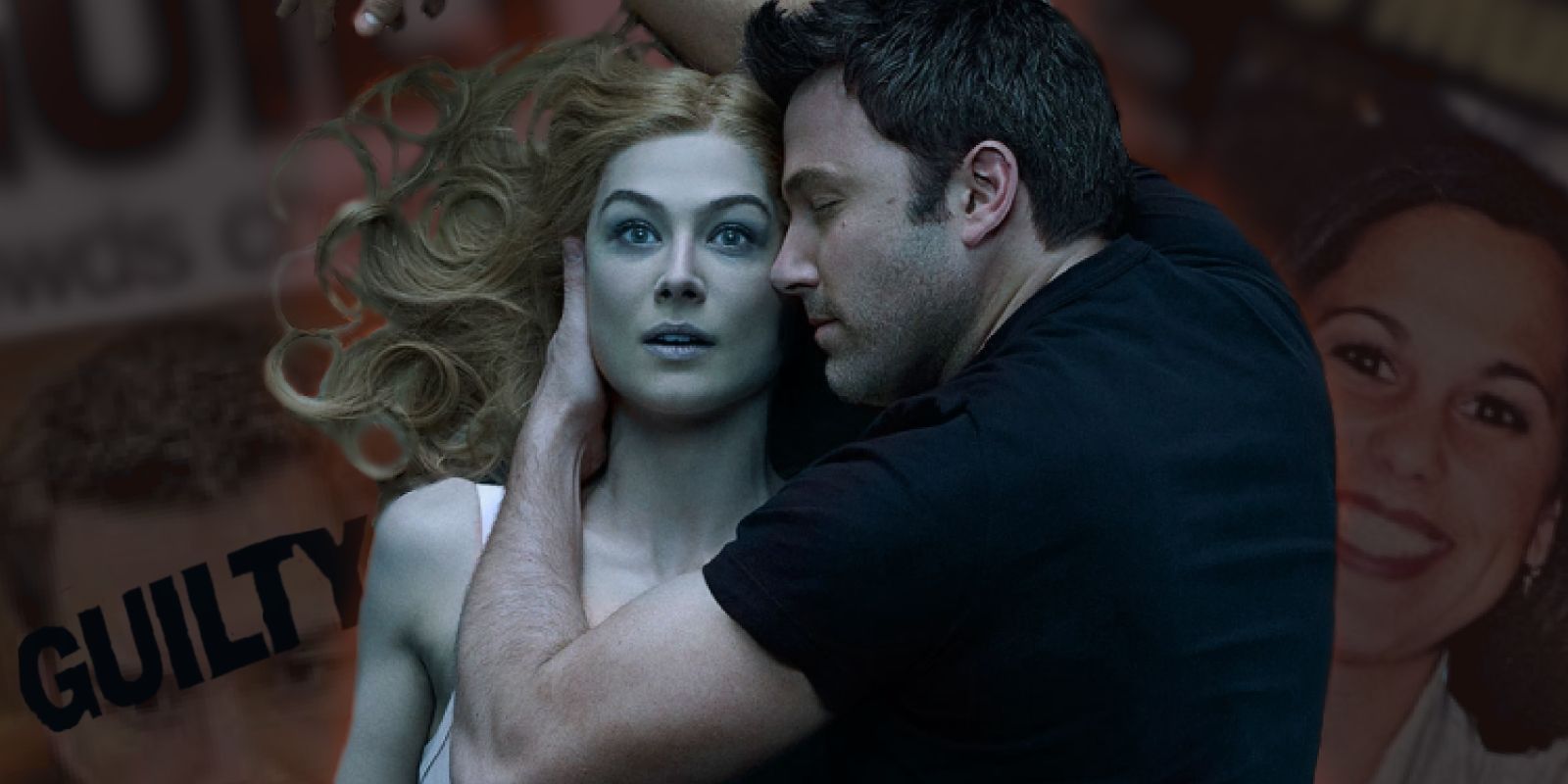Summary
- The toxic relationship at the center of Gone Girl parallels the real-life Scott and Laci Peterson case.
- The media's obsession with airing the couple's secrets is a significant theme explored in Gone Girl that has been featured in multiple real-life cases.
- While the ending of Gone Girl differs from many real-life cases, the similarities between this fictional psychological thriller and reality are difficult to ignore.
The following article mentions topics that may be upsetting to some reader, including murder and sexual assault. Please read on with caution.
Gillian Flynn and David Fincher's Gone Girl is one of the most loved fictional crime stories of all time, but it draws a lot from real life. It's not uncommon for books and movies to pull inspiration from real-life events, as plenty of fictional horror villains are based on actual serial killers. That seems to be the case with the 2014 critically acclaimed film Gone Girl, as the parallels to a real-life murder investigation are absolutely shocking.
Based on a novel by the same name, Gone Girl follows Nick Dunne and his gorgeous wife, Amy. The two share a seemingly blissful marriage until Mrs. Dunne goes missing on their anniversary. Police suspicion and extreme media attention have all eyes on the "happy" couple, and the result is a mystery that bears an eerie similarity to one of the biggest true crime murder cases in the past few decades. Thus, many wonder if the Gone Girl movie and the preceding novel are based on a true story.
Updated by Fawzia Khan on April 18th, 2024: Gone Girl continues to be a beloved movie by director David Fincher, despite its release back in 2014. The movie quickly became a cult classic, with its murder mystery-adjacent plot which actually became a commentary on conjugal relations and gender roles. While Gillian Flynn's novel was an original story, there were plenty of references that the author gleaned from true crime. This feature has been updated with better formatting and more analysis about what inspired Gone Girl's story.
The Terrifying Story Of Nick and Amy's Relationship Is Filled With Twists and Turns
There Is a Sense of Realism to Gone Girl Viewers Have Seen In a lot of Shocking True Crime Stories

How Jon Hamm Lost Gone Girl Role to Ben Affleck
Mad Men's Don Draper himself, Jon Hamm, explains how he lost the lead role in Gone Girl to Ben Affleck.
|
IMDb Rating |
Rotten Tomatoes Score |
Metacritic Score |
|---|---|---|
|
8.1 |
87% |
79% |
Judging by the fact that the Gone Girl movie is a shocking psychological thriller and is clearly inspired by true crime, it's safe to specify that Nick and Amy's (played by Ben Affleck and Rosamund Pike) relationship is toxic. Their marriage has a manipulative nature to it, as their obsession with each other peaks to an unhealthy level. The picture-perfect couple struggles with power dynamics from the start, but things especially fall apart after they lose their jobs in the recession and have to move from New York to Missouri to support Nick's dying mother. He begins an affair with a younger student, and Amy starts to feel resentful that she's lost all autonomy in life.
Amy's feelings of neglect and failure in the David Fincher movie didn't just start in her marriage though. Her parents were famous for their children's book series Amazing Amy — hence why Amy's missing person case blew up in the media. This could be interpreted as an idealized version of Amy that only served to highlight how she had failed while growing up, doing none of the things that Amazing Amy could. Finally, gaining control of her life, Amy sets up an elaborate scheme to frame Nick for her murder, which she intends to follow through on, including drowning herself so that Nick would be incarcerated in her absence.
When she falls in love with Nick for a second time after seeing his impassioned interview on TV, she kills her old flame, Desi Collins, after framing him for her kidnapping and rape. Amy manages to manipulate Nick by taking things one step further and inseminating herself with his sperm, guilt-tripping him into staying with her for the baby. This story is chilling to the bone, but also raises questions about the institution of marriage, the violence it conceals, and how far the war of the sexes can really go.
Gone Girl's Story Is Similar To Scott And Laci Peterson

How Gone Girl Became the Perfect Anti-Rom-Com
Since the film explores rigid gender roles and just how imperfect marriages can be, Gone Girl establishes itself as the perfect anti-rom-com.
- Tove Lo wrote and performed the song "Cool Girl", which was inspired by the film.
- Amy Dunne has her own Pinterest page, which furthers her girl-next-door image perfectly.
At the heart of Gone Girl, a few key elements make the mystery come off as a borderline true crime caper. For starters, Ben Affleck's character Nick Dunne and his wife Amy are a very attractive, picturesque, and seemingly perfect couple. The marriage seems flawless, but there's a real struggle behind closed doors. Unfortunately, when the beautiful but sadistic wife goes missing, all eyes are on her husband because in true crime fashion, it's usually the spouse.
The media circus, including photographed vigils, press conferences, and interviews, shows a seemingly grieving husband as he becomes increasingly suspicious. The media storm around crime that involves a conventionally attractive couple is a well-known phenomenon, and Gone Girl emulated this perfectly in Nick and Amy's twisted story. It's only when the strings begin to unravel that the truth behind Amy's disappearance reveals that the picture-perfect couple has a pretty dark reality.
The original inspirations for Gone Girl were several books that impacted author Gillian Flynn's writing career. Ellen Raskin's The Westing Game was the biggest source of inspiration, as were novels such as Rosemary's Baby and Notes on a Scandal due to their uneasy endings. She also included several references to the play Who's Afraid of Virginia Woolf, many of which Flynn didn't believe people would catch onto. While Flynn intended to put a psychological thriller twist on marriage, she also admitted to being inspired by true crime.
Not only was she inspired by killer couples, but Flynn also drew inspiration from the media's obsession with specific cases. As depicted in the Gone Girl movie, when one part of a striking couple goes missing or turns up murdered, there's almost always a close media following that often includes pointing the blame at the spouse. All the couple's secrets get aired out on live television. Sadly, this is not just a fictional story, as a similar series of events unfolded in 2002 with Scott and Laci Peterson.
The Scott Peterson-Gone Girl Connection

Gone Girl and The Fugitive Make for a Perfect Double Feature
The Fugitive and Gone Girl are about husbands accused of murdering their wives, but that's not the only thing that makes this a great double bill.
- Reese Witherspoon was first in the running to play Amy Dunne in Gone Girl after she had optioned the book's rights from Gillian Flynn. She withdrew her interest after her first meeting with David Fincher as she was not the right actress for the role.
On Christmas Eve, 2002, 27-year-old Laci Peterson went missing from her home. While she was missing, her husband, Scott Peterson, was subject to numerous interviews and tabloid coverage as he publicly longed for the return of his wife and unborn son, Connor. Of course, he was immediately a suspect in the eyes of the public, and his behavior while Laci was missing certainly didn't help the matter. That is due to not only Scott's occasional signs of aggression when asked about his innocence, but also the fact that the couple's marital problems had been made public.
During the investigation, it was revealed that the Petersons — primarily Scott — had been struggling financially. Due to this, there were conspiracies surrounding a possible life insurance-related motive. On top of that, it was also revealed that Scott was having an affair in the months leading up to the disappearance.
Tragically, the most significant difference between the real-life Scott and Laci Peterson case and its fictional counterpart, Gone Girl, is in the findings of the case. In Gone Girl, Amy Dunne turns up alive and well. In reality, Laci Peterson's body washed up on the shore of San Francisco Bay four months after her disappearance. This grim finding would lead to Scott's conviction two years later. He was found guilty of the first-degree murder of his wife and the second-degree murder of their unborn son, Connor. He spent more than two years on San Quentin's death row before his death sentence was overruled in 2020. In January 2024, the Los Angeles Innocence Project took on Peterson's case, in hopes of reviewing previously unreviewed evidence that could change the outcome of his conviction.
Gone Girl isn't based on a true story or one particular crime, but the story does take inspiration from this tragic case and the media's fascination with the couple behind it. The similarities in the premise of both cases, and the behaviors of the suspects are nearly identical, with one big difference: Laci was actually murdered by her husband. Despite some very different endings and conflicting details, it's hard to ignore the parallels between the Dunnes and the real-life Petersons. These similarities to a real-life murder case make the Gone Girl story all the more visceral.





